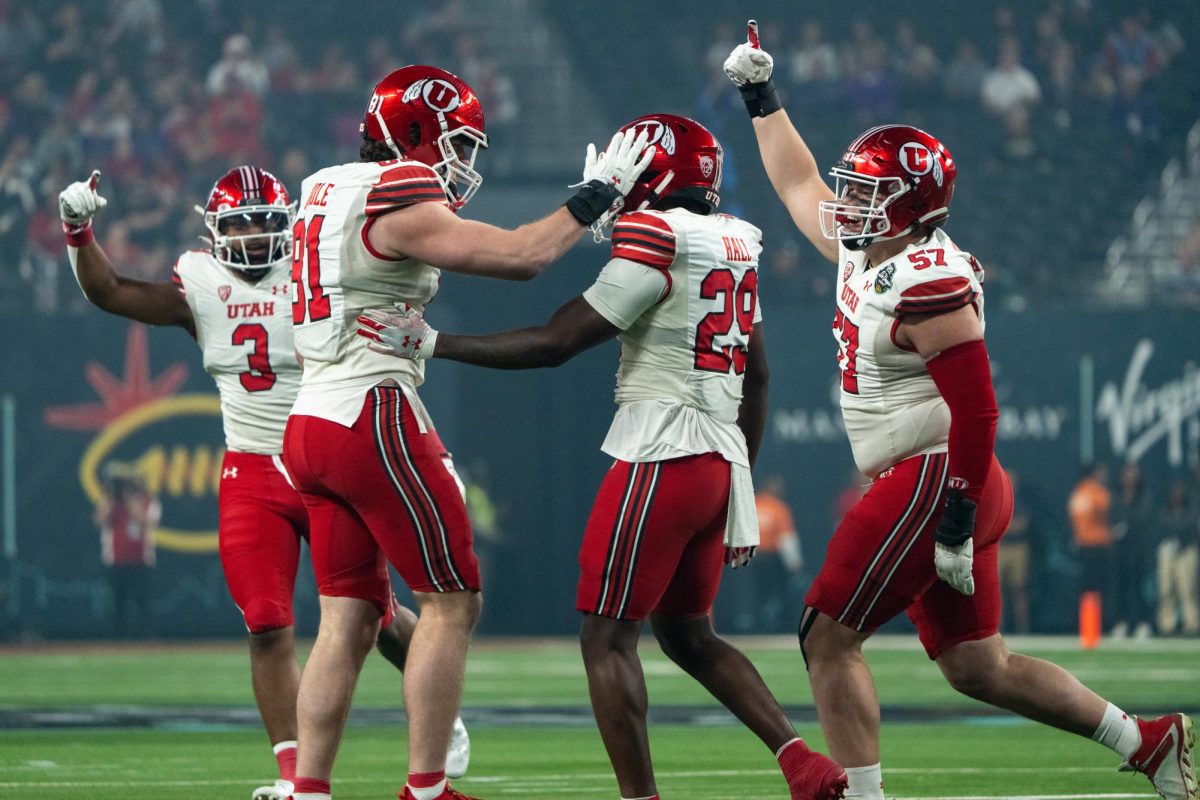Despite a rather unfortunate ending, the University of Utah’s final game of the 2023 college football season was one for the history books.
Although no statistical records were broken and no attendance record was set, the Utes were a part of history, as the NCAA made a significant leap in advancing collegiate football. Specifically, Utah’s Las Vegas Bowl game against Northwestern marked the first-ever contest where both smart tablets and coach-to-player helmet communications were used simultaneously.
The game was the first of 14 bowl contests in 2023 that featured at least one of such technologies. Moreover, the Utes game was part of a larger experiment to see if a more permanent decision regarding the implementation of modern communication in college football will be made.
While the idea of using smart tablets and helmet communications might not sound wildly advanced, their testing signifies a momentous paradigm shift in college football.
For years, the NCAA has remained quiet while its professional counterpart, the NFL, implemented all sorts of technologies aimed at improving coach-to-player communication. To put things into perspective, the NFL has used some form of coach-to-player helmet communication since 1994. The NCAA, in 2024, still uses hand signals and play-calling poster boards.
What Do Coaches and Players Think?
On the collegiate level, the topic of in-game communication technologies has been far more dilapidated. For years, conferences and coaches have attempted to convince the NCAA to adopt a modern in-game communication system, to relatively no avail.
Sports journalist Chris Vannini made note of positive reactions to updated coach-to-player communication technology tested in a Grambling State v. Southern game.
“I’m not gonna lie, it [helmet speakers] was perfect,” Grambling State quarterback Elijah Walker told Vannini. “It helped me be more of a coach on the field, get the play in faster and communicate better.”
“You can make in-drive adjustments instead of waiting for them to come to the sideline,” said former Southern interim head coach Jason Rollins, who called in the defensive plays in the game. “It’s like a walkie-talkie, where you hold the button and you can talk. … I loved everything about it.”
The Grambling State v. Southern game occurred in 2021, and since then, excitement has only grown for the potential adoption of a more modern system.
Following their use of both in-helmet communications on smart tablets, Utah football head coach Kyle Whittingham tacked on his praise for the new technologies.
“I thought it went very well, especially the tablet part of it,” Whittingham said. “We didn’t have any chance to work with the tablets in practice. We did with the communication and the headsets and we thought that was a big positive as well.”
With the large-scale testing for advanced communication technologies being an overwhelming success, it seems like a more permanent implementation might finally be on the horizon.
Moreover, the implementation of a more advanced communication system couldn’t come at a better time. As of right now, the college football world is on high alert due to the prevalence of sign stealing.
Sign Stealing
By now, most football fans have heard at least an inkling about the University of Michigan football sign stealing scandal. But for those who haven’t, Michigan allegedly had members of their staff go to the games of upcoming opponents and film the team’s sideline to record the hand signals used by coaches. The scandal became one of the biggest storylines of the 2023 college football season, and for their part in the scandal, Michigan was punished with a three-game suspension for their head coach, Jim Harbaugh, but went on to win the national championship. The school is still currently under investigation by the NCAA.
What most fans don’t know is how prevalent the epidemic of sign stealing is within the archaic world of college football.
An October 2023 article from ESPN sheds light on the pervasiveness of sign stealing within collegiate football.
“Sign stealing, whether legal or illegal, is incredibly rampant in this business,” the article explains, based on an interview with an anonymous Power 5 Assistant Coach. “Ohio State defensive coordinator Jim Knowles told ESPN in December that he estimates 75% of teams do it in some form. NCAA rules don’t directly ban stealing signals, but they prohibit using electronic equipment to record signals and ban off-campus scouting of future opponents.”
If these statistics are even close to true, it should immediately signal a need for change. The extensive nature of sign stealing in college football is one of the most revealing plights of the NCAA’s outdated communication system.
Luckily for the NCAA, there is an easy solution. An integration of similar in-helmet communications technologies like the ones used in the 2023 Las Vegas Bowl would pull the plug on sign stealing in its entirety.
Players want it, head coaches want it and now all that’s left is for the NCAA to officially approve the technologies’ adoption.



